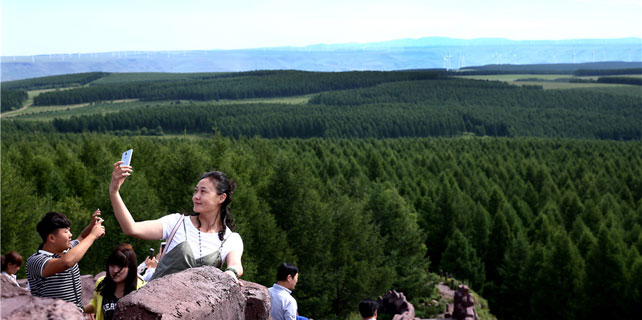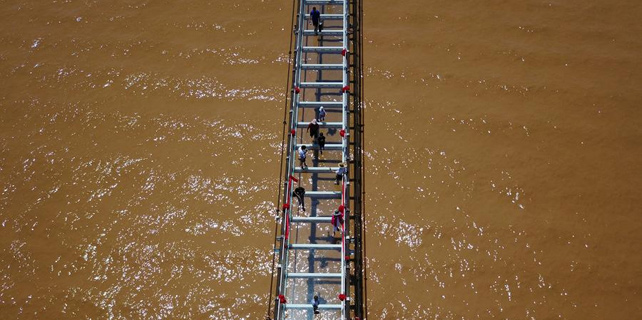Success as a tourist spot endangers caves
 |
|
Chen Haitao, a member of the design team from the Dunhuang Academy, works in Cave 254 in the Mogao Caves, in Dunhuang, northwest China's Gansu province, in 2016. [Photo/Xinhua] |
The dilemma between preservation of the 1,651-year-old site and the demands of tourism has become more urgent, and the academy adopted a series of measures to try to strike a balance, aside from limiting daily visits.
Zhang Xiantang, deputy director of the academy, said the digitization of murals inside the Dunhuang caves is the most effective way to protect them. Before visitors start their tour of the real caves, they are led first to the visitor center, where 3D movies using digital technology are shown to display the frescoes and sculptures in some caves closed to the public for preservation.
This has helped visitors get better background knowledge and reduce their stay in the actual caves. The academy allows each visitor to examine eight caves a day and limits the combined time in the caves to 75 minutes.
Each cave has hundreds of figures on its walls, mostly of the Buddha, including palmsize artwork. Visitors cannot get a good look at mural details, staying in a cave, in dim light, for just a few minutes.
But with high-definition prints displayed in museums, people can see the details clearly, Zhang said. The project has enabled the "unmovable museum on walls" to be shown anywhere in the world with 3D technology, he said.
There are 2,415 painted sculptures and 45,000 square meters of frescoes inside the 735 caves, the earliest dating back to 366.
So far, the academy has finished collecting data on 119 caves, of which 30 can be viewed online, e-dunhuang.com, according to Yu Tianxiu, who has worked for years on the digitization of the caves. The website, which launched on May 1, 2016, will have an updated version by the end of this year offering more pictures and interactive experiences.
- Chinese composer leads world premiere of Dunhuang's ancient music in Shanghai
- Digitalizing Dunhuang: Ancient Buddhist art protected by modern tech
- Enchanting Dunhuang shines in Gansu
- Preserving the pearl of the Silk Road: Dunhuang arts digitalized
- Mingsha Sand Mountain scenery zone in Dunhuang attracts tourists









